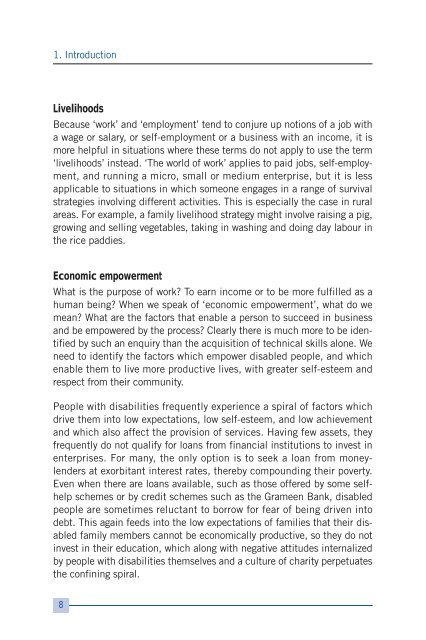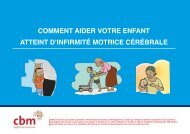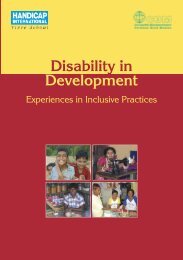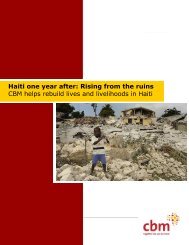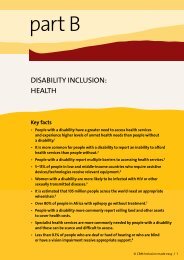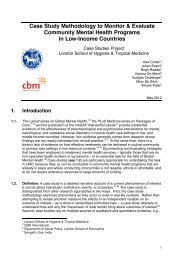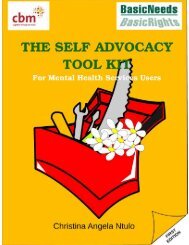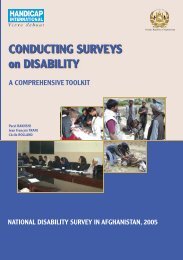Skills Development through Community Based Rehabilitation (CBR)
Skills Development through Community Based Rehabilitation (CBR)
Skills Development through Community Based Rehabilitation (CBR)
You also want an ePaper? Increase the reach of your titles
YUMPU automatically turns print PDFs into web optimized ePapers that Google loves.
1. Introduction<br />
Livelihoods<br />
Because ‘work’ and ‘employment’ tend to conjure up notions of a job with<br />
a wage or salary, or self-employment or a business with an income, it is<br />
more helpful in situations where these terms do not apply to use the term<br />
‘livelihoods’ instead. ‘The world of work’ applies to paid jobs, self-employment,<br />
and running a micro, small or medium enterprise, but it is less<br />
applicable to situations in which someone engages in a range of survival<br />
strategies involving different activities. This is especially the case in rural<br />
areas. For example, a family livelihood strategy might involve raising a pig,<br />
growing and selling vegetables, taking in washing and doing day labour in<br />
the rice paddies.<br />
Economic empowerment<br />
What is the purpose of work? To earn income or to be more fulfilled as a<br />
human being? When we speak of ‘economic empowerment’, what do we<br />
mean? What are the factors that enable a person to succeed in business<br />
and be empowered by the process? Clearly there is much more to be identified<br />
by such an enquiry than the acquisition of technical skills alone. We<br />
need to identify the factors which empower disabled people, and which<br />
enable them to live more productive lives, with greater self-esteem and<br />
respect from their community.<br />
People with disabilities frequently experience a spiral of factors which<br />
drive them into low expectations, low self-esteem, and low achievement<br />
and which also affect the provision of services. Having few assets, they<br />
frequently do not qualify for loans from financial institutions to invest in<br />
enterprises. For many, the only option is to seek a loan from moneylenders<br />
at exorbitant interest rates, thereby compounding their poverty.<br />
Even when there are loans available, such as those offered by some selfhelp<br />
schemes or by credit schemes such as the Grameen Bank, disabled<br />
people are sometimes reluctant to borrow for fear of being driven into<br />
debt. This again feeds into the low expectations of families that their disabled<br />
family members cannot be economically productive, so they do not<br />
invest in their education, which along with negative attitudes internalized<br />
by people with disabilities themselves and a culture of charity perpetuates<br />
the confining spiral.<br />
8


